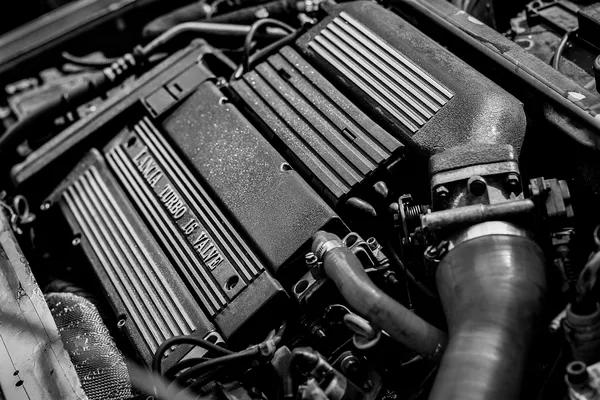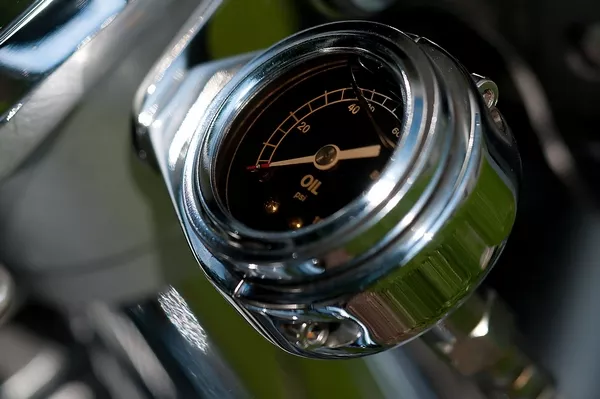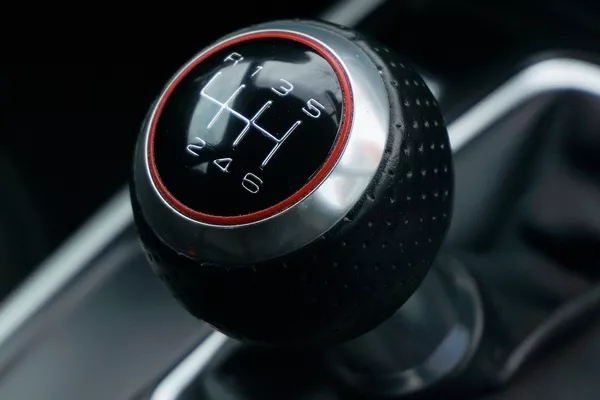1. Long drives tips: Why it is important to prepare your car and yourself?
As you probably know by now, the best thing about having your own car is the freedom to go anywhere, anytime, bringing just about anything. It’s a pretty handy thing to have around, especially when you need to drive out to the province for an extended vacation or when the mood just hits you to go on a day road trip.
But if you think getting on the road out of town is as simple as just hopping onto the driver’s seat, the way you usually do when driving around the neighborhood, you’ve got another thing coming. For one, you’ll need to cover far more distances, and while this is actually easier on your car as a perfect opportunity to stretch its legs, an unexpected breakdown can easily bring your trip to a screeching halt.
Another thing is that you’ll likely be driving across unfamiliar territory, which can make it challenging when you need to call for help in case something goes wrong, especially at night.
Just like an athlete getting ready for an Olympic event, you need to make sure that both you and your machine are in the best shape possible before making the trip. No matter how well you think you know yourself and your ride, it’s hard to tell what’s out there once you’re far from the conveniences of the city, so it pays to be prepared.
How To Prepare For A Long Drive By Yourself
Look through our article to find 5 helpful long drives tips to prepare your car and yourself!
>>> You might want to know: Why does driving make you tired and/or sleepy?
2. 5 long drives tips to prepare your car and yourself
2.1. Mechanical
One of the most important things to prepare is the heart of the car’s performance itself: the engine. As the one part of the car that’s responsible in getting you going to begin with, it probably needs the most amount of attention.

Make sure your engine is in top condition
Before setting out on a long drive, change the engine oil and oil filter, or at least make sure that the oil is still relatively fresh. As the lifeblood of your car’s engine, oil keeps it running smoothly by providing adequate lubrication to the moving parts, reducing the effects of friction in regular use.
Check the oil’s level and color using the dipstick in the engine bay, and top it up or replace it when necessary, especially if the oil has turned black or it has a burnt smell. While you’re at it, also check underneath the car if there are leaks coming from the oil pan; having fresh oil is no good if it’s just going to drip away from the engine.

Ensure that your engine has enough oil, or get an oil change before the trip
Take a look at the belts, such as the timing, serpentine and fan belts, that drive the different components under your engine bay. The timing belt is responsible for keeping your engine’s crankshaft and camshaft synchronized when running, so that the valves open and close at just the right time during the intake and exhaust phase. The serpentine belt is a long winding belt that is responsible for keeping the alternator, power steering, water pump and aircon compressor working smoothly.
On older cars, the fan belt transmits the motive power from the engine to a radiator fan that draws in fresh air to help cool the engine. If any of these belts are frayed, cracked or loose, it compromises the car’s performance and efficiency. Worse, if they should break, then the car won’t be able to start at all.

See if your belts need replacing
Aside from being able to run smoothly, your car’s engine also needs to breathe properly, in order to be more efficient in burning the fuel needed for combustion. Check the air filter if it needs cleaning or replacement as well.
What powers the engine? Fuel. Whether it’s gasoline or diesel, make sure you have a full tank before you set out on your journey. Also check the fuel filter to see if it’s still doing its job of keeping out contaminants that can clog your fuel system, otherwise, it needs to be replaced.
Delivering the engine’s power to the drive wheels (whether rear-wheel, front-wheel or all-wheel drive) is the transmission, and it will be put to the test on long drives when you haul more than your usual number of passengers and cargo. Make sure that there is still enough transmission fluid in your car.

Check your transmission for oil levels, as well as grinding sounds or slipping
If you’re using a manual transmission, check if the clutch still enables you to shift gears crisply or if it’s already slipping, which means it needs to be replaced. The last thing you need when attempting to overtake on the highway or tackle uphill climbs is to have your momentum broken with a faulty gearbox.
Brakes are a crucial element to your car’s performance and safety. Much like the transmission, friction plays an important role in proper braking by providing sufficient grip to stop the vehicle. Check them for worn-out brake pads, brake calipers and rotor discs that need to be refaced or replaced. Even your parking brakes should also be inspected, since you’ll need it especially if you park on inclines. And make sure there’s enough brake fluid in your reservoir.
>>> Learn more: How to make your brakes last longer?

Don't neglect the brakes
You might want to take a look at your suspension system as well, including the shock absorbers, struts, springs, and torsion bars. Aside from providing a smooth ride, the suspension is also tasked with keeping your vehicle steady over a variety of road surfaces. A faulty suspension system will make your car difficult to control and compromise its maneuverability, such as when you are negotiating a curve.
>>> Also check out:
- Best in-car entertainment ideas to fight boredom while in a long drive
- How to respond to on-road emergencies
2.2. Electrical
The main source of electricity for your car is the battery. Is it ready to continuously provide power for your car’s functions and accessories in a long drive? Check to see if the battery has adequate fluid level, and top up accordingly. You can also bring your car to a battery shop and have the battery tested to see if it still holds enough charge, since this is a free service.

Drive with a faulty battery and you could end up like this
>>> See also: 3 essential things to know about car battery
You’ll also need to make sure all your lights are in working order. They’re not just for when darkness falls (as in the case of headlights and foglights) but also for warning other drivers of your intentions (turn signals and brake lights), as well as being able to see inside the car for anything you might need (cabin lights). If there are defective bulbs, have them replaced promptly.
2.3. Cooling
Operating in gruelling conditions, the engine needs to be kept at its optimum operating temperature to ensure that it runs as smoothly as it was designed to. That’s the role of the cooling system, to keep the engine from running too hot.
Excessive heat can break down various components such as rubber belts and fuel lines, even turning engine oil into sludge that reduces lubrication. Check your radiator’s coolant level and top up if it becomes too low. Bring along extra coolant or distilled water in case the radiator overheats during your trip; avoid using tap or mineral water since they can leave behind residue inside your radiator, making it prone to corrosion. Inspect your radiator fan to see if it’s spinning when the engine is turned on.

Before going on your trip, subject your car aircon to a routine cleaning
As for the occupants inside the car, the airconditioning has to be in tip-top condition, especially with the summer months. Before going on your trip, subject your car aircon to a routine cleaning, which will also involve replenishing the refrigerant to make it run cool again. Check the compressor and evaporator for leaks or damage that will affect cooling power. You wouldn’t want to have your passengers furiously fanning themselves throughout the trip, especially if it’s a long one.
2.4. Tires
Get your tires ready for that road trip by inspecting if it still has enough tread; the less tread on the tire, the less grip it will have on the road, making it dangerous to drive especially in the rain.
>>> How to check your car’s tread depth with a P1 coin?
Check for punctures and cracks that can compromise the tire’s structural integrity. If any of your tires need replacing, there’s no better time than now. Assuming that your tires are still good to go, check if they have enough air (including the spare); not enough air will affect your fuel consumption, too much air will give you a bumpy ride, as well as a higher risk of blowouts at high speed.
2.5. Make sure you’re roadworthy, too
Whether it’s a sedan or an SUV, the most important part of any vehicle is the person driving it. If you really want to be ready for that long drive you’ve been excited about, it’s best to take care of yourself.
Get enough sleep, for one. Bring enough of your favorite songs with you that will last the entire trip, to put you in the right frame of mind. If you have a dashcam, make sure it’s fully charged and has enough memory. Have pertinent documents ready in your glove box, such as copies of your car’s registration and insurance policy.

Fully charge your devices and load them with navigational apps for backup
If it’s an especially long drive, schedule stopovers at certain points for meals and some stretching; buying food at drive-throughs deprives you of much-needed breaks, and the oily food isn’t going to help you grip the steering wheel with confidence.
Always have emergency numbers ready on your phone for when you need help, and keep your devices fully charged, especially if you’re relying on navigational apps to find your way. Pack an emergency kit, such as tools and first-aid materials. And never forget to have your wits about you, because you’ll never know when you’ll need to think and act fast in a given situation. The best journeys are always those where man and machine arrive in one piece.
>>> Click to find more safety driving tips on Philkotse.co












